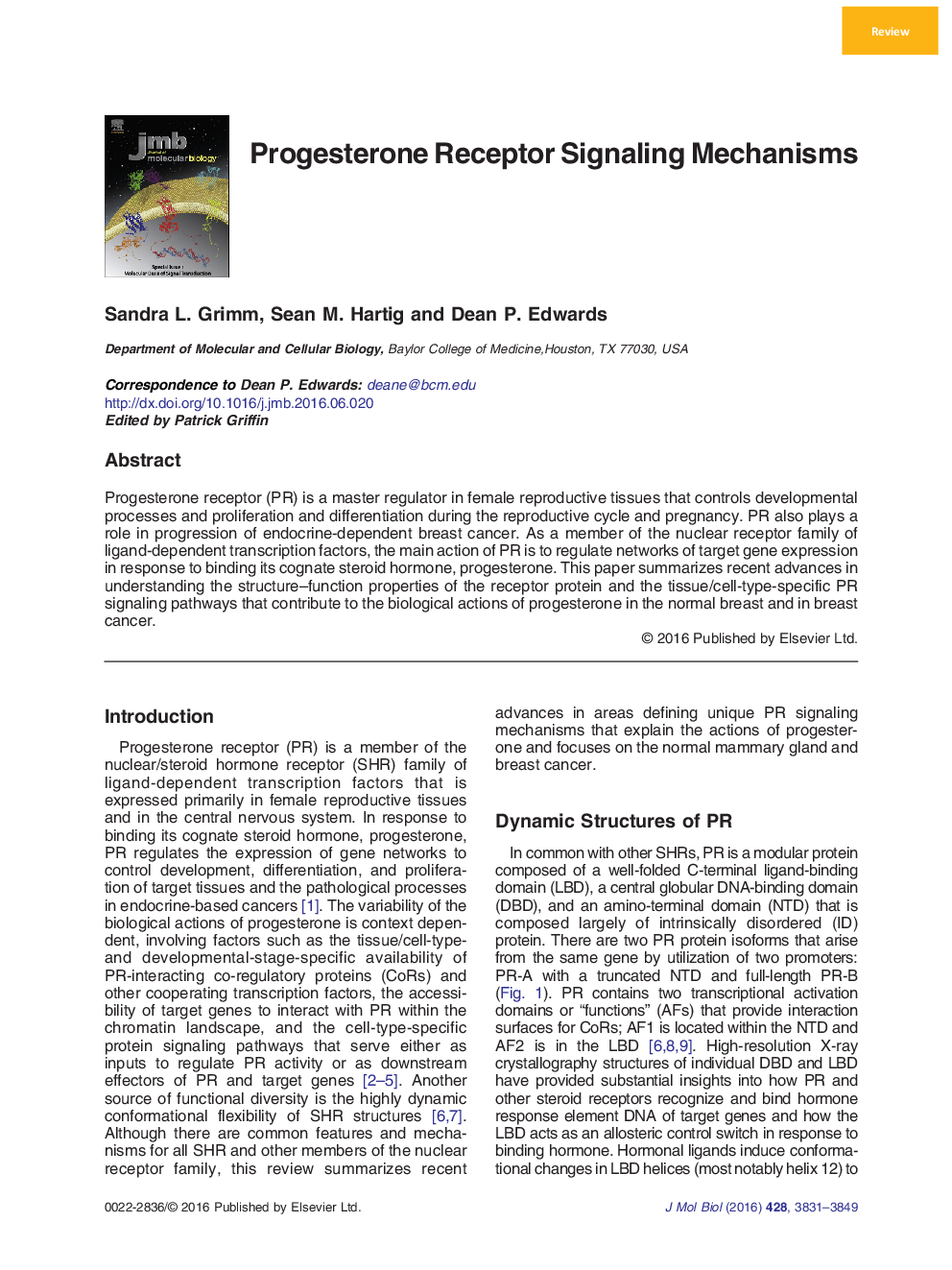| کد مقاله | کد نشریه | سال انتشار | مقاله انگلیسی | نسخه تمام متن |
|---|---|---|---|---|
| 5532911 | 1402086 | 2016 | 19 صفحه PDF | دانلود رایگان |
- PR mediates variable responses to progesterone in a context-dependent manner.
- Conformational flexibility of PR structure contributes to functional diversity.
- Unique signaling mechanisms contribute to cell-specific actions of progesterone.
- New tools are needed to advance structure studies of intact PR-protein complexes.
- New models are advancing the understanding of the role of PR in breast cancer progression.
Progesterone receptor (PR) is a master regulator in female reproductive tissues that controls developmental processes and proliferation and differentiation during the reproductive cycle and pregnancy. PR also plays a role in progression of endocrine-dependent breast cancer. As a member of the nuclear receptor family of ligand-dependent transcription factors, the main action of PR is to regulate networks of target gene expression in response to binding its cognate steroid hormone, progesterone. This paper summarizes recent advances in understanding the structure-function properties of the receptor protein and the tissue/cell-type-specific PR signaling pathways that contribute to the biological actions of progesterone in the normal breast and in breast cancer.
Graphical AbstractDynamic structures of the steroid hormone receptor (SHR). The conformational flexibility of SHR is mediated by the intrinsically disordered amino-terminal domain (NTD) and by allosteric interactions between domains [ligand-binding domain (LBD) and DNA-binding domain (DBD)]. The apo SHR (left side of diagram) in response to binding co-regulatory proteins (CoRs), DNA, and steroidal ligands undergoes conformational changes to a transcriptionally active receptor (right side of diagram). Changes include folding and stabilization of the NTD, allosteric interdomain interactions, and repositioning of helix 12 in the LBD, enabling the binding of CoRs containing LXXLL motifs. Shadows around LBD and DBD are potential avenues of interdomain interactions. Binding proteins that induce folding and stabilization of NTD may function directly as a CoR or by reorganizing structure of the NTD enabling binding of other CoRs.261
Journal: Journal of Molecular Biology - Volume 428, Issue 19, 25 September 2016, Pages 3831-3849
